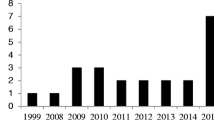Abstract
Nanoparticles (NPs) may be capable of reversing the toxic effects of drug overdoses in humans by adsorbing/absorbing drug molecules. This paper develops a model to include the kinetic effects of treating drug overdoses by NPs. Depending on the size and the nature of the NPs, they may either pass through the capillary walls and enter the tissue space or remain only inside the capillaries and other blood vessels; models are developed for each case. Furthermore, the time scale for equilibration between the NP and the blood will vary with the specific type of NP. The NPs may sequester drug from within the capillaries depending on weather this time scale is larger or smaller than the residence time of blood within the capillary. Models are developed for each scenario. The results suggest that NPs are more effective at detoxification if they are confined to the blood vessels and do not enter the tissues. The results also show that the detoxification process is faster if drug uptake occurs within the capillaries. The trends shown by the model predictions can serve as useful guides in the design of the optimal NP for detoxification.
Similar content being viewed by others
Author information
Authors and Affiliations
Corresponding author
Rights and permissions
About this article
Cite this article
Fallon, M.S., Varshney, M., Dennis, D.M. et al. A Physiologically-Based Pharmacokinetic Model of Drug Detoxification by Nanoparticles. J Pharmacokinet Pharmacodyn 31, 381–400 (2004). https://doi.org/10.1007/s10928-004-8322-9
Received:
Accepted:
Issue Date:
DOI: https://doi.org/10.1007/s10928-004-8322-9




